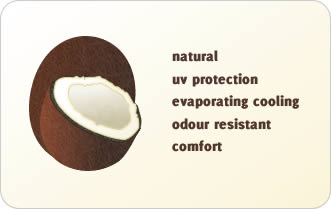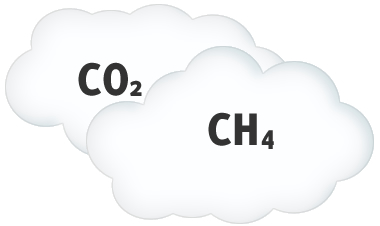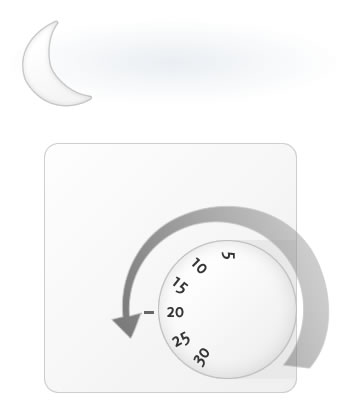The living-room
Did you know ......that each human being breaths 150.000m3 of air during his/her lifetime?
Indoor comfort with less need to heat
Climate protection and innovative comfort: a mix of solutions
Two companies combined efforts for developing a new line of natural and ecological yarns. They added activated carbons coming from coconut shells into polyester polymers.
The novel yarns containing the so-called CoCoNa™ provide effective moisture management absorb odours and offer UV protection. They can be used in any end-use from appareal to home-furnishing, from the shoe industry to the automotive industry. Yarns containing CoCoNa™ are available in a wide range of counts, can be produced using different technologies and can be dyed.
Sinterama and CoconaInc

Chemistry makes interiors a living space
 At the end of the 18th century, the global effects of human activities have become noticieable
At the end of the 18th century, the global effects of human activities have become noticieable
Data retrieved from glacial ice cores show the beginning of a growh in the atmosphericconcentrations of several greenhouse gases, in particular CO2 and methane.
Such starting date also coincides with James Watt's invention of the steam engine in 1784.
Nobel PrizePaul J. Crutzen, well known for his work on ozone depletion, states that a radical greenhouse gas contingency plan is needed.
Chemistry has balanced answers

The climate loves our solutions
Hybrid solutions for LowVOC Gloss Paints
Water-based acrylic hybrid technology offers asignificantly improved open-time versus traditional acrylic systems -so painters can touch-up their work without too much time stress- plus excellent flow, re-paiting and re-brushing qualities.
The Hydrotech™ technology offers excellent potential durability -meaning fewer re-paints- and significantly doesn't require the use of potentially harmful cobalt driers. All-round, an attractive solution for coatings industry and the environment alike.,
Hydrotech™, Rohm and Haas
Advanced paint technology with superior envinmental profil
Thanks to enhaced efficiency in the interaction between the various engredients, true progress in the field of environmentally-advanced high performance coatings solutions is available: the Avanse™ technology allows paint formulators to potentially use less key raw ingredients - pigments and binders- with no loss in performance.
The coatings industry wins, the environment wins too - it enables up to a 10% decrease in CO2 emissions in a typical water-borne interior wall paint formulation. Fewer coats of paint may be required to achieve desired levels of hiding - and/or the lifetime of the paint jobb may be extended
Avanse™, Rohm and Haas
The no heating cost house
The zero-heating cost house (BASF housing company) in the German town Ludwinshfen demonstrates that energy-efficient cosntruction and modernization is not only technically feasible, but also makes a lot of business sense.
The heating system is integrated into the windows
The inner pane of the triple-glazed window is furnished with an extremely thin and invisible metal coating which conducts electricity. When a low-voltage current is applied, the coatings heats up like a resistance heater which enables the window to radiate warmth. In order to prevent heat loss to the outside, the outer pane has a heat-reflective coating.
Moreover, the spaces between the three panes are filled with an inert gas that conducts heat even less efficiently than air- This quickly produces a pleasant interior atmosphere, and uses less energy than a conventional heating systems.
Electrochromic glass
Electrochromic devices change light transmission properties when you put some electric tension on them. This allows you to control the amount of light and heat passing through.
In elentrchromic windows, the electrochromicmateial changes its opacity: it changes between a colored, translucent state (usually blue) and a transparent state. A burst of electricity is required for changing its opacity, but once the change has been effected, no electricity is needed for maintaining the particular shade reached. Glass darkening reduces solar transmission into the building. When there is little sunlight, the glass brightens, so that the need for the artificial light is minimized and energy is saved.
Electrochromicglass provides visibility even in the darkened state and thus preserves contact with the outside environment.
Programme the thermostat of your home to set the temperature low at night or when you're out of the house and save about 440 kg CO2 per household and year.

This is based on the assumption that heating causes about 14% of the total European greenhouse gas emissions (4 Gton CO2/year). Furthermore, heating is responsible for 70% of the energy consumption of households and 70% of greenhouse gas emissions from household energy consumption is related to heating
This "no heating cost house" is well lined with thermal insulating panels
Neopor®, BASF